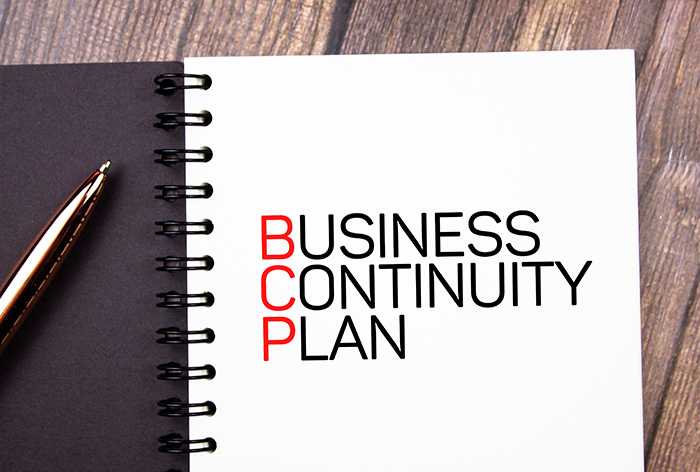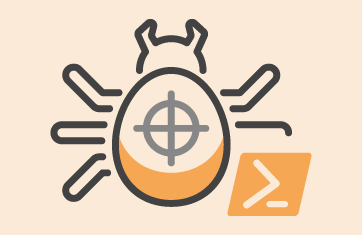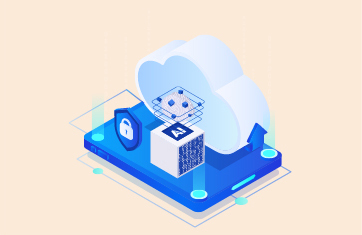Do you have a Business Continuity Strategy? A successful business always has strategies to keep it running. But even with the best strategies, disruptions can always occur and cause losses.
Natural disasters, pandemics, human error, fires, and other unpredictable events can potentially affect how you run your organization and serve customers. The best way to shield your business from the crippling effects of a crisis is to have a business continuity strategy.
While you likely can’t prevent a flood or power outage, a business continuity plan should help you resume and recover operations as quickly as possible following an unexpected event. Learn more about plans, what they constitute, and business continuity planning steps. And find out how monitoring your IT infrastructure does even more than just preparing for disasters.
What is a Business Continuity Plan?
A business continuity plan (BCP) is a documented set of instructions and procedures that outline how an organization should resume business functions during and after a disruption. The comprehensive plan contains instructions, methods, and strategies that an organization should follow after an unexpected crisis or outage.

Various types of events can cause disruptions. Natural disasters like earthquakes, pandemics, equipment failure, terrorist attacks, and cyber-attacks can impact any organization. 45% of global IT security survey respondents stated that their organizations had experienced up to five cyber-attacks within a year.
As serious as these disasters are, your organization doesn’t have to halt operations after such events. With contingencies, you can bounce back smoothly.
Let the continuity plan function as a blueprint for your organization’s human resource and management teams. It should detail the business’s essential functions, identify which systems and processes the teams must sustain, and outline how to maintain them.
While insurance may provide financial support after an unexpected event, a BCP is a proactive risk management strategy that helps your organization resume productivity much faster. A well-designed BCP is more sustainable as it prepares your company for potential disruptions and has protocols in place for immediate response. Being ready to handle outages helps reduce downtime, data loss, revenue impact, and reputational damage.
Why is Business Continuity Management Important?
Business continuity management (BCM) ensures critical operations continue during disruptions. It identifies threats through risk analysis, response plans, regular testing, and training and provides structured continuity protocols. The goals are to minimize downtime and recovery time from events so the business can re-establish functions and ride out incidents with minimal long-term effects.
In other words, a BCM functions as a shock absorber, helping businesses anticipate potential threats so they’re not caught off-guard during disruptions. It helps reduce financial losses, reputation damage, customer distrust, and revenue declines that can occur from unplanned outages.
Uninterrupted business activities keep key stakeholders satisfied and boost employee morale, as employees know they can still serve customers through crises. With a well-structured business continuity process, BCM helps businesses stay compliant. Regulations even mandate that specific industries like healthcare and finance have business continuity procedures in place.
What Should a Business Continuity Plan Include?
No business wants a disaster that will impact operations. Yet natural disasters, economic downturns, IT failures, or fraud, among other things, still occur. However, with a business continuity plan, you can be prepared for disasters and not end up among the 25% of companies that permanently close after disasters. For your continuity plan to work, it has to have the following components.
Risk Assessment and Impact Analysis
An important aspect of a continuity plan is assessing and identifying areas of weakness that could slow your business. For example, could theft or data failures affect critical systems?
Risk assessment and impact analysis help identify vulnerabilities and consequences of potentially disruptive events so you can address them. Impact analysis determines the resources, systems, and business functions that are most critical under different disruption timelines.
The results enable you to prioritize continuity and recovery efforts. Risk assessment and impact analysis provide a fact-based understanding of exposures to guide resources toward plans focused on high-priority risks and resilient recovery.
Emergency Response Procedures
Emergency response procedures are another essential part of the business continuity plan puzzle. While you may not have control over situations like floods or server crashes, you can steer the aftermath away from critical business operations.
Emergency response procedures define the roles of the emergency response teams and the steps they should follow during emergencies. Clearly defined roles and responsibilities help avoid confusion and allow a smooth transition during a crisis. Checklists provide steps to follow for evacuations, IT system fallback, off-site response coordination, and crisis communications.
Business Recovery Strategies
Even though geopolitical tensions and disasters like earthquakes can shake your organization, you can recover quickly with well-defined recovery strategies. Business recovery strategies are the processes and actions needed to resume critical functions and operations after a disruption. They’re a roadmap for stabilization and recovery.
The strategies address technical needs like IT system failover and organizational requirements like work area recovery. They also aim to enhance recovery time.
Another part of recovery strategies is the identification of alternate suppliers and workflow adjustments to enable you to quickly resume essential services and operations.
Data Backup and IT Monitoring and Recovery
Data backup is the backbone of a business continuity plan for businesses that rely heavily on data. Think how power outages, floods, or fires can leave your data systems vulnerable. Regular backups of files and systems are invaluable for protecting against data loss.
Data backup creates copies that are stored separately off-site or in the cloud. If primary systems or data are compromised, backups restore functionality and recover lost files.
Alongside data backup, having a unified IT infrastructure monitoring approach gives a better view of your IT landscape to help pinpoint issues quickly. Testing protocols to restore applications, networks, and data from these backups within a predefined recovery time ensures your business processes face minimal disruptions.
Roles and Responsibilities
Defining roles and responsibilities is essential for any effective business continuity plan. NFPA 1600 guidelines state that senior leadership must formally assign oversight responsibilities and define roles for the business continuity program.
In the event of an unforeseen disruption, having predetermined roles ensures it’s clear who is responsible for leading specific continuity tasks. Designating incident responders, recovery managers, asset managers, and team leaders according to skills and knowledge effectively streamlines response.
For example, the human resources director can oversee employee communications and welfare, while a public relations manager can handle media and external communications during incidents. Roles and responsibilities not only keep individuals accountable but also simplify decision-making during emergencies when time pressures are high.
How to Create a Business Continuity Strategy Plan in 5 Steps
Every organization, regardless of size, needs a robust business continuity strategy to withstand potential disruptions from unforeseen incidents. Here’s how to develop steps to create an effective plan that strengthens your business’ resiliency and improves its ability to recover smoothly.
1. Conduct a Business Impact Analysis
When planning your business continuity strategy, conducting a business impact analysis will identify threats to critical aspects like finances, operations, supply chain, and reputation. An analysis also helps recognize risks to start the continuity planning process. Discuss potential disruption scenarios affecting business functions with cross-functional team members.
Key areas to evaluate include financial losses per timeframe, eligibility for insurance claims, customer service disruptions, safety or environmental impacts, and regulatory non-compliance.
2. Identify Critical Business Functions
Identifying critical business functions enables the prioritization of business resources and focuses on ensuring the most important aspects remain operational during disruptions. For example, a company that relies on its IT infrastructure should safeguard and monitor its servers, databases, and networks from a single console using application performance monitoring.
When identifying critical business functions, focusing on gathering stakeholders from other departments helps categorize functions as critical, essential, or secondary.
3. Establish Plan Details
To establish plan details, start with the critical functions you identified and determine the recovery objective for each one. Detail the initial response for any disruption, such as notifications and activations, and develop continuity strategies using alternative locations, technology, or suppliers.
You can then assign roles and tasks to relevant staff along with associated timeframes for completion. Completing these elements provides a guideline for stakeholders to follow during incident implementation. It’s important to document all plan details for easy reference during incidents.
4. Test and Revise the Plan
With your plans in place, the next step is to practice and update them to ensure they remain effective. For instance, if you’ve acquired new assets after establishing the initial strategy, you must incorporate them into the plan for ongoing protection.
Test and refine in four key steps:
- Simulate real disaster scenarios without risks
- Use tests to pinpoint inconsistencies
- Simplify processes
- Address backup issues
Then, verify that you can restore networks and systems, recover lost data, and resume regular business functions. Testing and revising evaluates response capabilities and identifies amendments to strengthen disaster recovery preparedness.
5. Continuously Monitor
To optimize your business continuity strategy plans, you must continuously monitor plan effectiveness and the business environment. Regular monitoring involves conducting tests and assessments, tracking key metrics, reviewing incident reports, analyzing operational changes, and identifying potential risks or impacts. Update the plans to ensure you are ready for disruptions.
Even so, you don’t have to anticipate downtime; you can prevent it. Our eG Innovations proactive monitoring tools, like digital workspace monitoring and end-user experience monitoring, help identify abnormalities and faults before failures occur. Machine learning-powered analytics detect and fix minor issues before they become total outages. Proper monitoring is better than just having recovery strategies, as it helps avoid emergencies.
Stay Alert with IT Monitoring and Reporting from eG Innovations
An excellent business continuity strategy allows your organization to continue operating during and after disruptions. These strategies cushion your organization against financial losses, reputational damage, and disruptions to other operations. They involve risk assessments, formulating emergency response procedures, and, most importantly, data backup and IT monitoring.
While most of these plans are preventive measures, having an IT infrastructure monitoring solution is the ultimate business continuity plan. Machine learning abilities predict and prepare for disasters, which helps mitigate risks.
Regardless of the technology you use for infrastructure, digital workspaces, or applications, our eG Enterprise platform monitors every tier in your IT setup and gives you end-to-end visibility. Modern problems require modern solutions, and we are here to help. Contact us today and get the best from your IT ROI.
eG Enterprise is an Observability solution for Modern IT. Monitor digital workspaces,
web applications, SaaS services, cloud and containers from a single pane of glass.



 Meet Gita Rao-Prasad, a seasoned marketing leader with a passion for driving global go-to-market strategies and enhancing customer experiences. Currently serving as the Vice President of Marketing at eG Innovations, Gita plays a pivotal role in driving awareness and adoption among key stakeholders.
Meet Gita Rao-Prasad, a seasoned marketing leader with a passion for driving global go-to-market strategies and enhancing customer experiences. Currently serving as the Vice President of Marketing at eG Innovations, Gita plays a pivotal role in driving awareness and adoption among key stakeholders.


